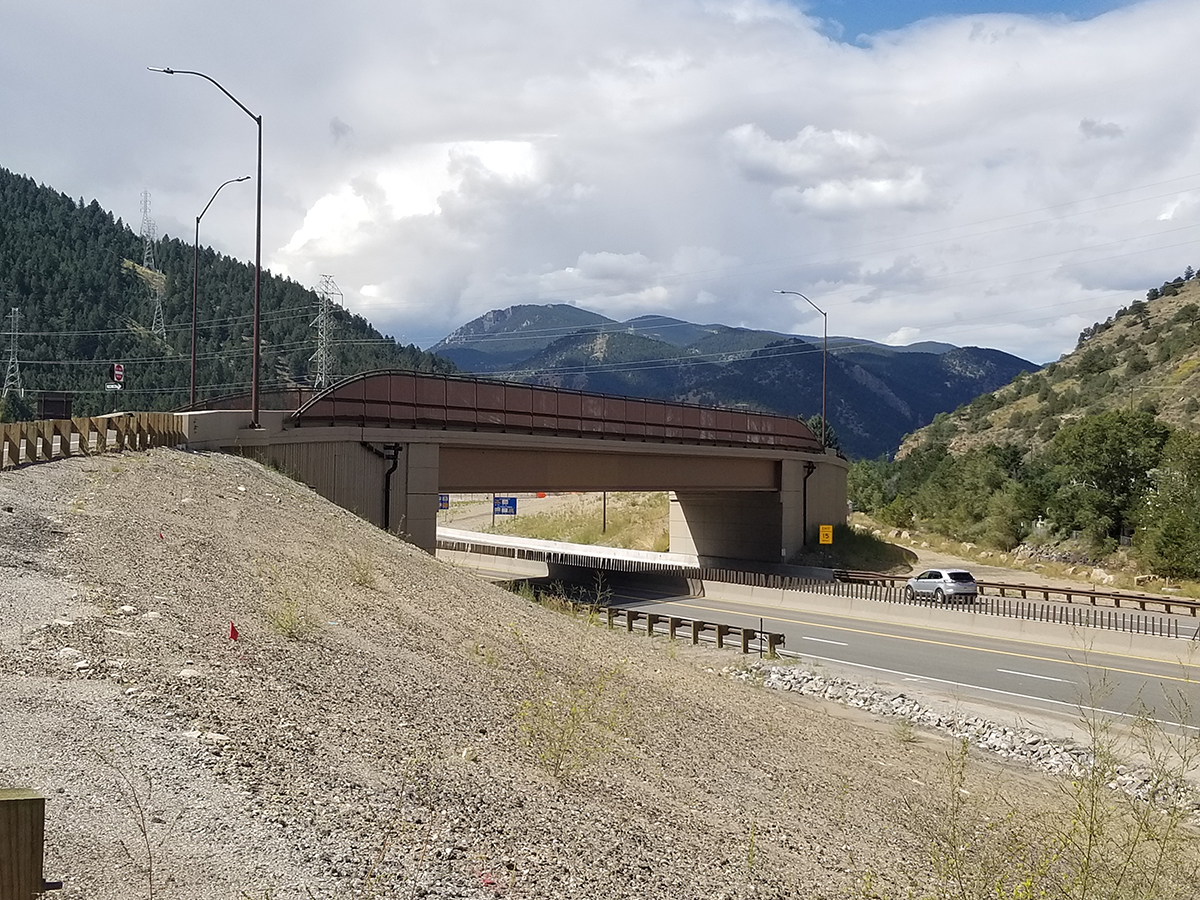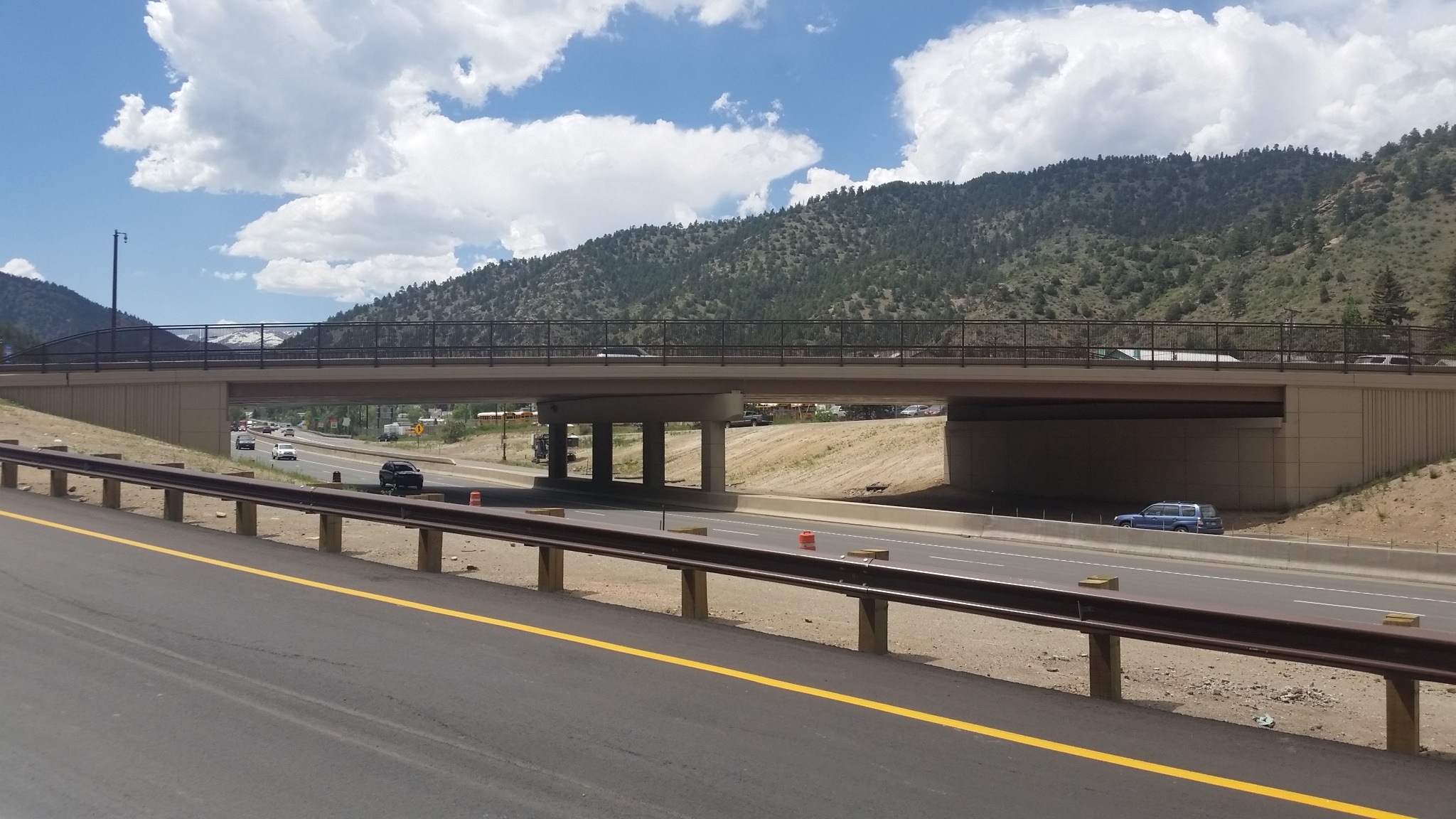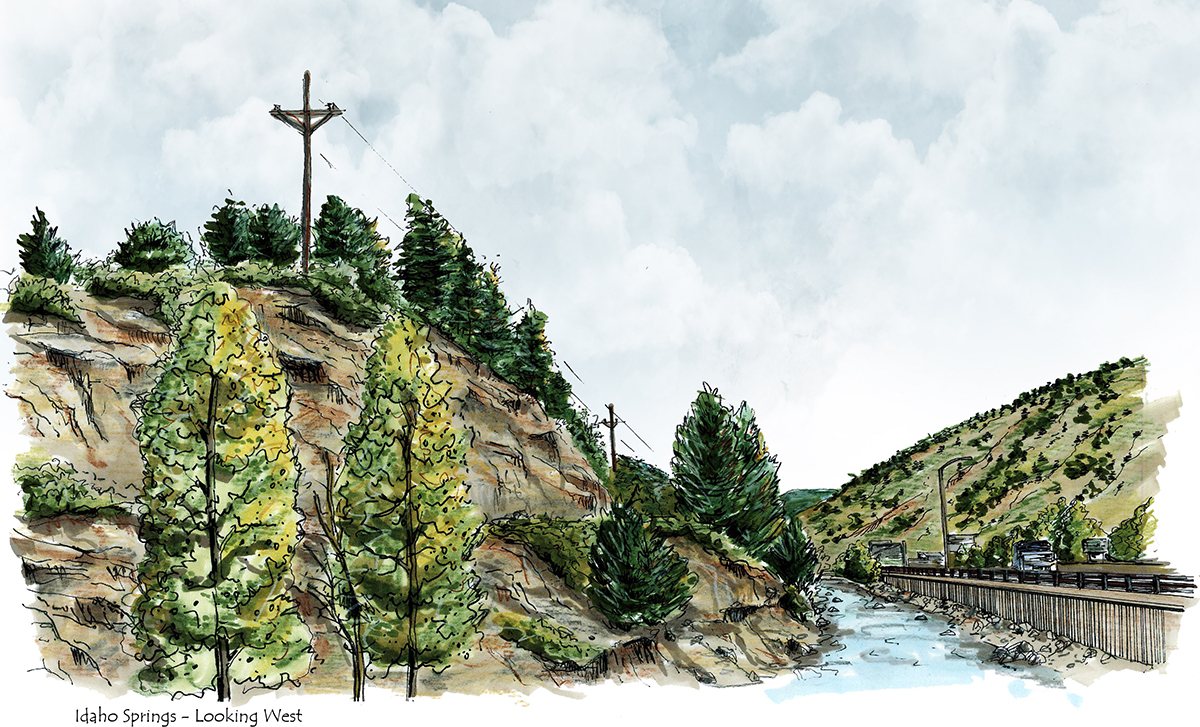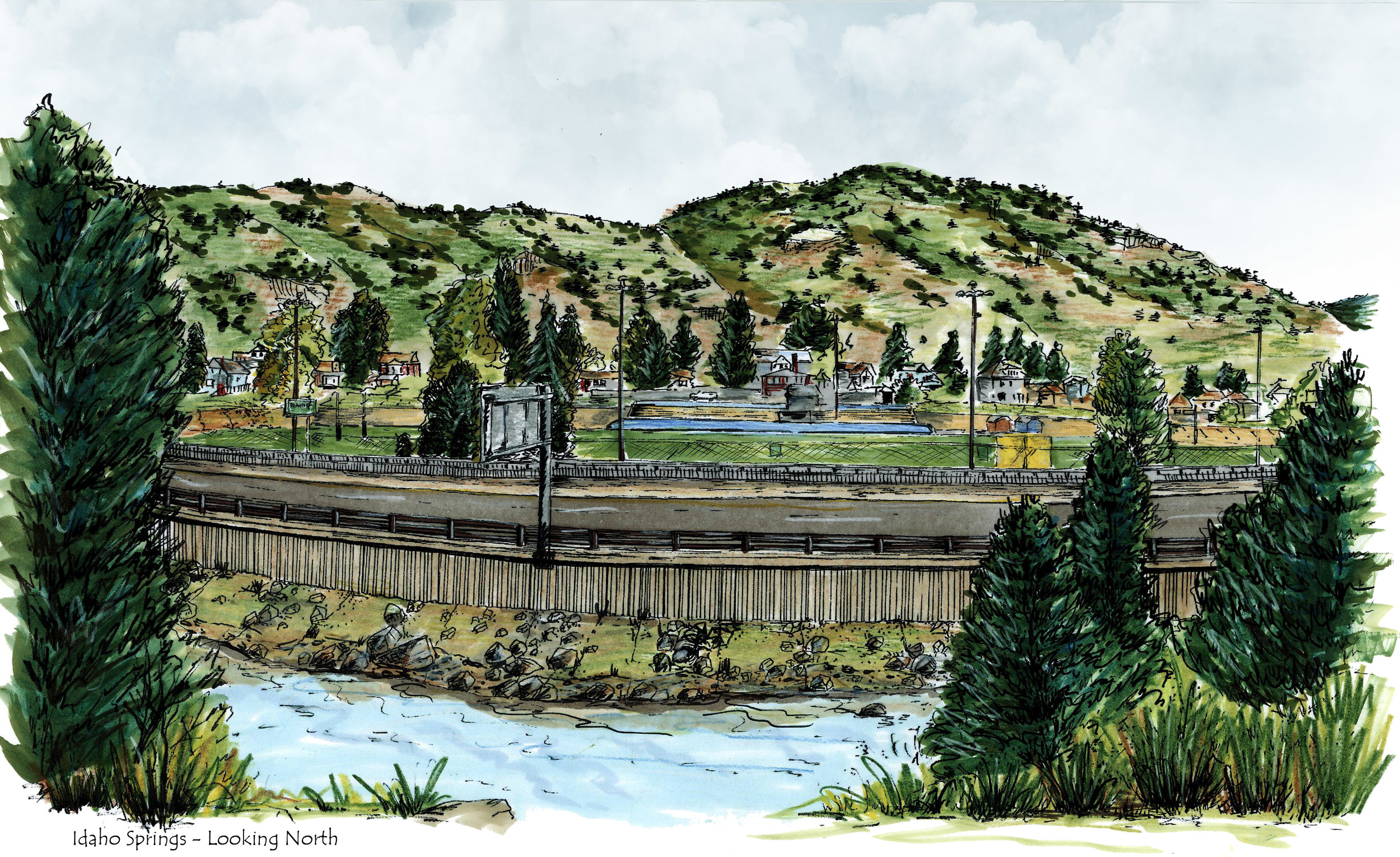EB PPSL
East Bound Peak Period Shoulder Lane
Landscape Architecture > Transportation > East Bound Peak Period Shoulder Lane
Idaho Springs, Colorado





Client: Colorado Department of Transportation
Peak Period Shoulder Lane: THK Associates, Inc. developed the architecture and aesthetics for 13 miles of the eastbound I-70. The aesthetics ties these structures in both form, texture and color to other improvements on the I-70 Mountain Corridor including the Veteran's Memorial Tunnels and complies with the I-70 Mountain Corridor Aesthetic Guidance. The project includes two new bridge structures, eleven new retaining walls and intersection improvements. In addition, as a part of the required mitigation for the work along I-70, THK also redesigned Water Wheel Park. As the project moved into construction, THK was contracted to perform Construction Administration on the structures and in Water Wheel Park.
THK worked closely with CDOT and the Project Leadership Team (PLT) during the design of the project to gather community and stakeholder input, meet community goals, reduce visual clutter and design a facility that matched the character of the corridor.
Peak Period Shoulder Lane creates a wider shoulder to allow for a third eastbound travel lane during peak times in the corridor. This approach to the widening of I-70 to deal with peak travel time congestion allowed the highway to be expanded within the current Right-of-Way and without creating negative impacts to Clear Creek.
In 2017, this project received an Environmental Excellence Award from the Federal Highway Administration. Since 1995, this award have recognized leaders across the country who make outstanding contributions to environmental stewardship and partnerships above and beyond traditional transportation project outcomes. FHA stated
"The 13-mile 1-70 Eastbound Peak Period Shoulder Lane Project provides an innovative approach to maximizing use of existing highway infrastructure by opening and tolling highway shoulders to ease the peak-period congestion. This system preserves and enhances the community character while respecting the limitations and the beauty of the mountain corridor. Less congestion is expected to reduce worker commute times, enhance the productivity of labor, provide opportunity for low-income workers, and enhance the tourism economy."
